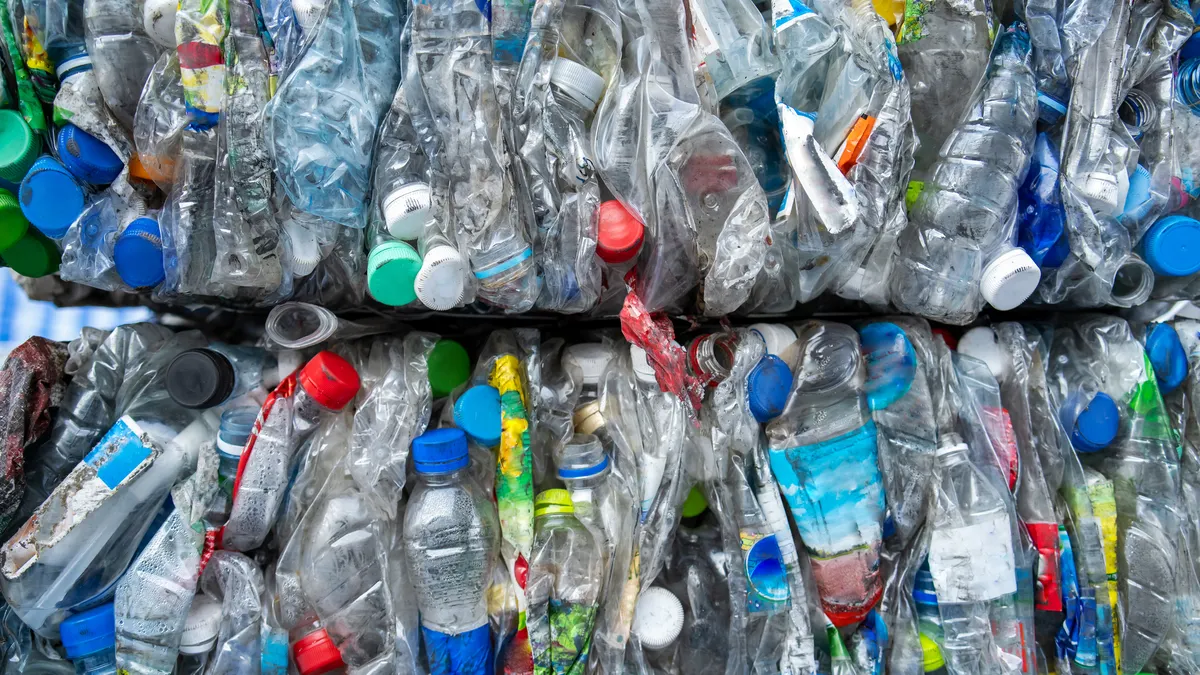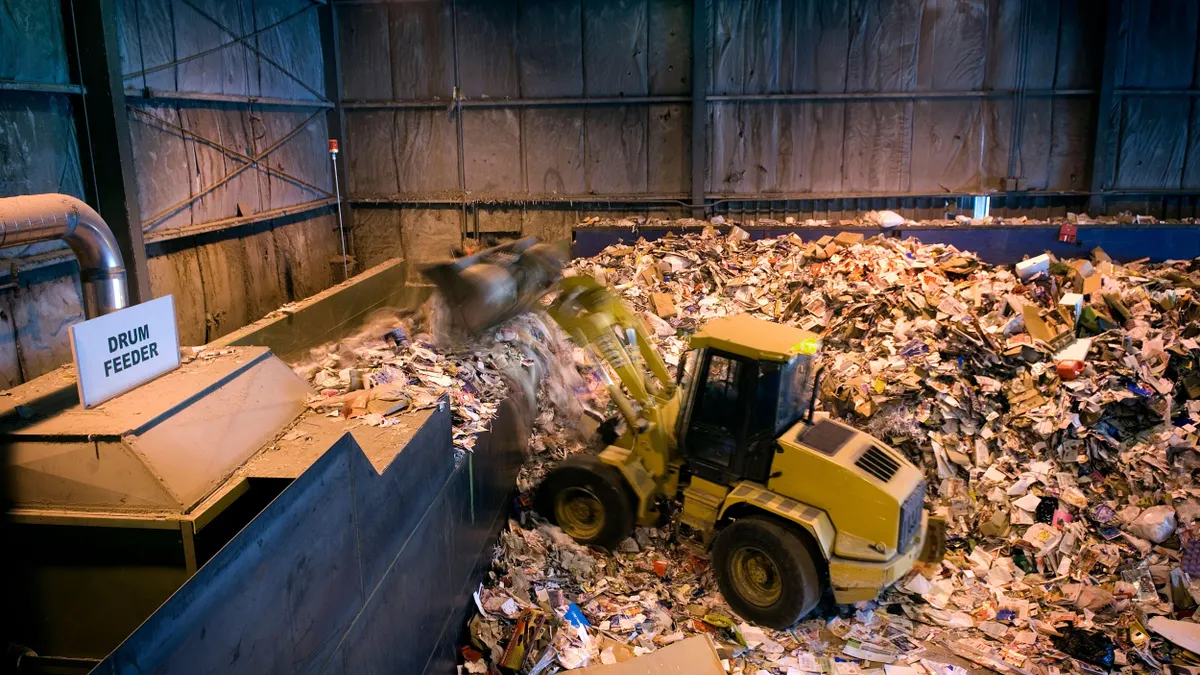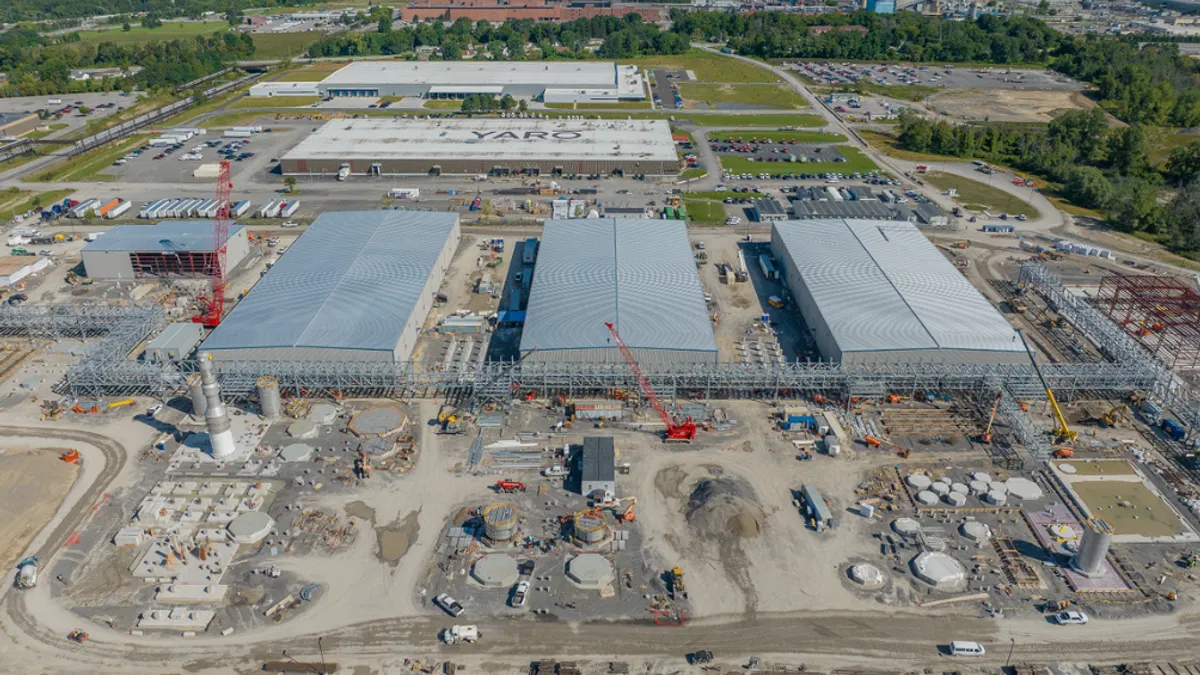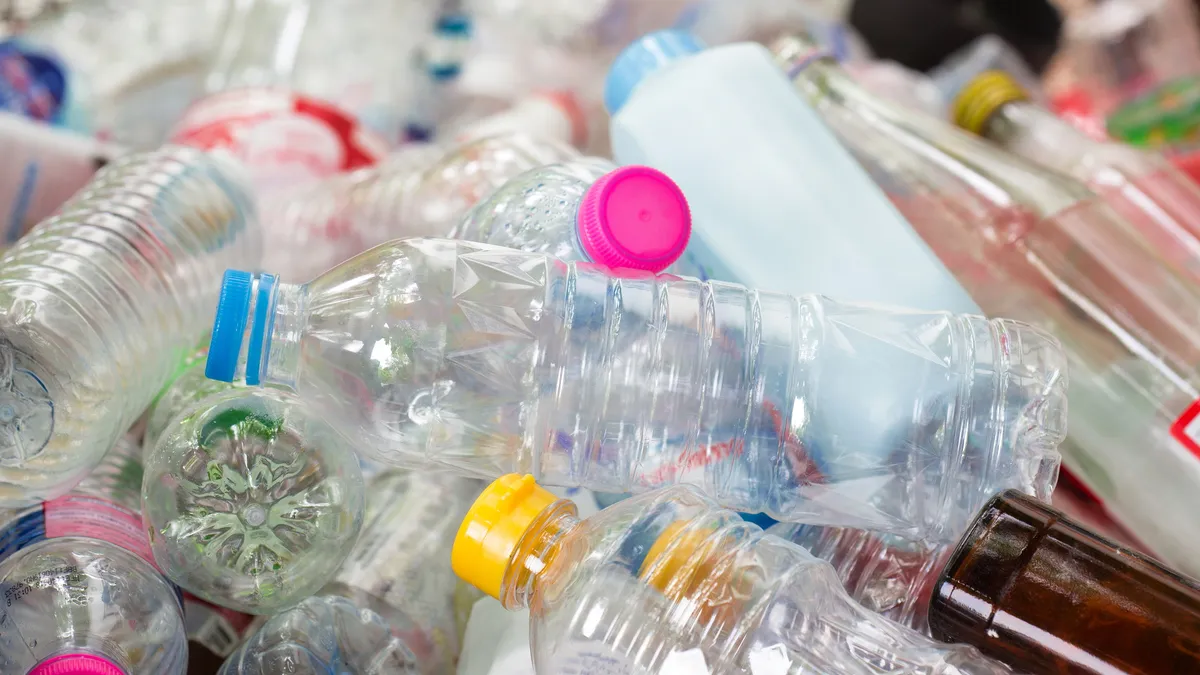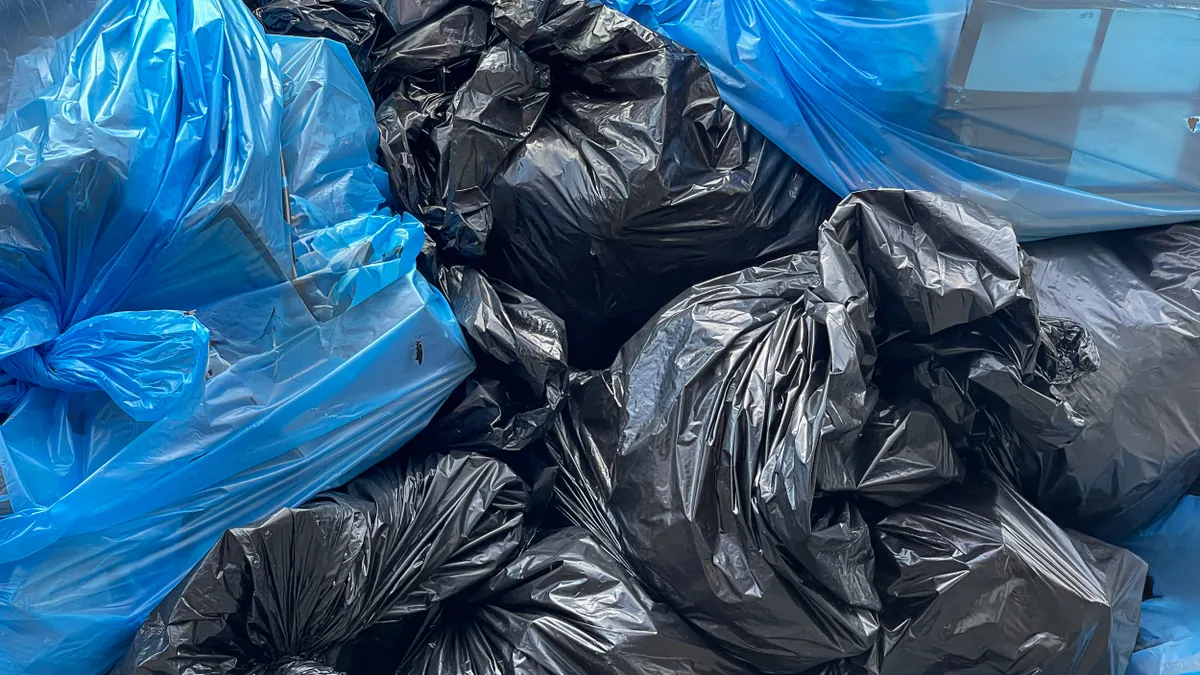Demand for recycled paper and plastic commodities will be influenced in the near future not just by international trade and commitments from big brands, but by consumer spending habits and new state laws, said speakers at the virtual Paper & Plastic Recycling Conference Oct. 21-28.
Speakers saw a generally positive outlook for many paper and plastic commodities into 2022, attributing stable demand to influences such as e-commerce packaging changes, international shipping snarls and expected capacity expansions at North American paper mills. Here are a few takeaways from the event.
E-commerce packaging changes could play a role in driving recycled content demand
Recyclers and brand owners alike have long discussed the role of corporate sustainability goals in influencing markets for packaging made with recycled materials. As 2025 sustainability goals loom, companies will need to commit to meaningful changes to use packaging that can be successfully recycled in existing MRFs, said David Feber, a partner with McKinsey.
E-commerce packaging is one area where market trends will likely drive higher demand for recycled paper and plastic over the next few years, Feber predicted. At the beginning of the pandemic, the percentage of sales made directly from e-commerce sites rose from about 10% to about 17% percent, and he estimates that number could continue to rise to about 20% of purchases in four or five years even as the pandemic eases.
Many of these products were never designed to be shipped directly to consumers, meaning companies see opportunities to create more effective, efficient direct-to-home packaging. Companies that aim to reduce the amount of protective shipping packaging they use should choose easily-recyclable materials, such as paper void fill instead of plastic, he said.
Paper void fill is easily recyclable and made of material paper mills already use and want, added Brent Bell, vice president of recycling at Waste Management. "We're talking to all kinds of brands about how they can perhaps make their packaging with something that is much more recycling friendly, something that would be accepted in these curbside programs,” he said.
Feber predicted that companies will capitalize on the e-commerce trend not just by switching to more recyclable shipping boxes and void fill, but also by changing the packaging of the products themselves to make them easier to ship. It’s an opportunity for companies to reimagine their packaging for sustainability, he said.
Brand commitments could be the key to decoupling prices for virgin and recycled HDPE, PET resins
Brand demand for more recycled content has had a direct impact on pricing for plastic resin types in 2021, speakers said.
Prices for polypropylene and HDPE, including natural and fixed color, “are giving aluminum cans a run for their money right now because there's a lack of supply,” Bell said. “We desperately are trying to unlock the supply of plastics that fit the demands of these customers,” prompting Waste Management and other MRF operators to look for untapped commercial businesses or underserved multifamily housing as potential new sources of supply.
Increasing demand for recycled HDPE and PP resin is great news for both recyclers and resin manufacturers hoping to capitalize on brands’ recycled content commitments, who predict “solid” pricing for the next year to 18 months. However, experts also expect these prices to decline slightly as the year draws to a close.
Scott Saunders, general manager of the KW Plastics recycling division, said brand commitments play a huge role in demand for recycled natural-colored HDPE resin in particular because it is easy to dye it to match a product’s signature color. However, brands are facing inflation and rising operating costs in 2021 and beyond, prompting them to seek cheaper alternatives to recycled resins.
“We are seeing pushback from brands that we did not see last year over pricing because their commodities and transport costs, and [costs of] chemicals to make their products, have gone up," said Saunders. "They see a lot of inflation and they are looking to cut costs.”
Meanwhile, brands that buy recycled colored HDPE resin typically seek the material for applications that aren’t sensitive to a brand’s look and feel, meaning they want a cost-saving alternative to virgin. That could prompt recycled resin prices to come down further as the cost of virgin HDPE weakens, he said.
Eadaoin Quinn, director of business development and procurement for EFS Plastics, said short-term pricing for recycled HDPE and PP grades is likely to decrease since it’s still largely coupled to virgin prices. Long term, however, “brand commitments could change the dynamics.”
She sees recent pricing trends as proof that virgin and recycled HDPE prices are starting to decouple. If that trend continues, “recycled might sometimes be cheaper or sometimes more expensive, but overall it could have more stability because it wouldn't be as reliant on what is happening on the global stage. It would be more focused on the fixed costs that domestic recyclers have,” Quinn said.
Upcoming recycled content mandates spark PET availability concerns
Meanwhile, tight market trends for recycled PET are driven not just by brand demand, but by upcoming changes in state law that will require beverage containers to include more recycled content.
Speakers at a PET commodity panel discussed how high-quality grades of PET, typically from bottle deposit states, are in very high demand right now, but “there are not enough bales to go around,” especially in California, where companies like Global Plastics Recycling operate. About a quarter of bales collected through the state's container deposit system are currently being exported, said company President Paul Bahou, and Mexico is one destination with particularly strong demand.
Ongoing logistics and supply-chain issues have compounded the problem, he said. "There's a giant traffic jam out at the port, so it doesn't matter what the price of resin is relative to flake right now. Can you get it? Is it going to come in time for you to use it?" he said.
Bahou worries about how local and regional companies will be able to meet recycled content demand starting in 2022, when the first part of California’s 15% recycled content beverage container mandate goes into effect. Washington could face similar demand squeezes when its own minimum recycled content law goes into effect next year.
Lori Carson, a site manager for PET recycler Phoenix Technologies, worries that recycled content mandates could further disrupt the PET market because “there are not yet mandates for collection.” If recyclers can't find more ways to collect higher volumes of marketable PET, the mandates might keep driving prices higher. In the past, rPET pricing has historically been coupled with virgin, but John Cook, director of sustainability at Niagara Bottling, sees the recycled content mandates as a driver that could more permanently decouple the two resins.
Paper mills focus on domestic capacity
Meanwhile, paper mills are balancing the demands and challenges of international and domestic markets for OCC and mixed paper. The demand for these grades has been generally favorable this year, but that positive trend is offset by continued supply chain, ocean freight shipping and international trade issues, speakers said. Those trends could keep more mixed paper and OCC in domestic markets in the next few years compared with current levels, they predicted.
John Daniel, CEO of Canusa Hershman Recycling, said ocean shipping bookings have been constantly delayed or canceled, and a shortage of drayage has further snarled schedules, marring an otherwise positive export market.
“While the markets have reached record levels, and there’s been a crazy run-up in price, the logistics challenges have really been the most noteworthy issue in the current state of affairs,” he said.
His company had already reduced has already been reducing its international shipments of OCC and mixed paper by more than 25% since 2017, when China began implementing import restrictions. He pointed to several international “winners” still buying mixed paper, such as India, Vietnam and Thailand, but he said India is the only country buying it in significant amounts.
Kurt McLaughlin, vice president of Quincy Recycle, says his company has largely stopped exporting, in part because of the ongoing shipping issues, but he said the focus on domestic markets has been good for business. "We're really bullish about the industry the next five-plus years for sure. In the short term, it might be pretty exciting and volatile, but we're excited about new capacity that's coming."
Shawn State, president of Pratt Industries' recycling division, said North American mills are already increasing recycled paper capacity to accommodate material that once went overseas; more mills are accepting mixed paper in their products; and more mills are being built overall. That represents huge potential for the next four or five years, he said.
“If you’re looking to avoid all the freight issues related to shipping and export... I think the capacity will be there to consume domestically, both OCC and mixed paper,” said State. “With Pratt’s mill in [Henderson, Kentucky], and then some of these other mills are coming online, everybody's trying to use a little bit more mixed paper. If companies choose not to export it, there will more places to sell it.”








